Hello,
We have a remodeled pool with fresh electrical which was all installed by a professional licensed electrician. I will spare you the details on having to hire a 2nd electrician and move to the issue. We tried to get the electricians to install GFCI breakers to both the pump and the pool light. The pump is a Jandy VS 165 and we have a Cutler Hammer breaker Box. This can not utilize the recommended Siemens GFCI BR breaker. The first breaker our electrician used kept tripping after some time however, it has stabilized with an Eaton CH breaker. That leads to the light which was also completely rewired. The light is on a Eaton CH GFCI breaker that connects to a couple of j-boxes then to an Intermatic PX300 12v transformer. The transformer is brand new and the breakers are brand new. The transformer then goes to another jbox on the pool deck and then down to the light itself. We have swapped to a 12v blub. Every time we try to use the light it trips. I started isolating the issue and opened the deck box and removed the pool light from the equation leaving the 12v wires open and it still tripped. I then removed the leads from the deck j-box at the transformer from the black and white (for 12 v) and it still trips. This means the transformer is somehow where the fault is located. I removed my 120v wires from the transformer and they do not trip. It is also worth noting that along the way back I used a multimeter to test continuity for any shorts and none were found in the wiring and nothing alarmed until connected to the transformer. I suspect my breaker box is the actual issue. After watching several guide videos and reading up on the documentation for the pool pump, the transformer and some general wiring I noticed that my breaker box does not have a separate common and ground bus bar. This means all of my grounds and commons are connected at the breaker box. I am pretty sure this is what is tripping my pool light GFCI however, that would lead me to question why it is not tripping my pump GFCI as well. I have some photos attached. This was the result of 2 separate electricians after asking them to make sure that it is up to code and done correctly. I am not saying it is not however, there appears to be a few glaring issues. We want it to be safe and would like to be able to use the light while we swim. I am sure I left some stuff out but would appreciate any information as to why the light GFCI is tripping but not the pump.
Main Breaker Panel
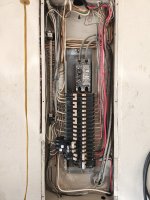
Close of GFCI Breakers
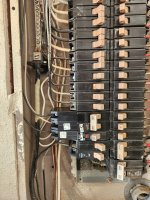
J-box exiting garage
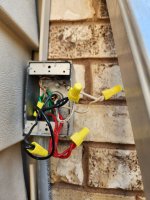
j-box at pool equipment.
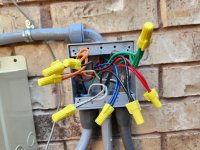
Switches for pump and light

Transformer and J-box at equipment
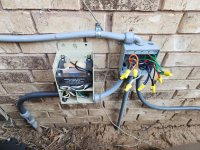
Close up of Transformer
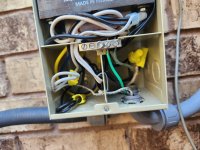
We have a remodeled pool with fresh electrical which was all installed by a professional licensed electrician. I will spare you the details on having to hire a 2nd electrician and move to the issue. We tried to get the electricians to install GFCI breakers to both the pump and the pool light. The pump is a Jandy VS 165 and we have a Cutler Hammer breaker Box. This can not utilize the recommended Siemens GFCI BR breaker. The first breaker our electrician used kept tripping after some time however, it has stabilized with an Eaton CH breaker. That leads to the light which was also completely rewired. The light is on a Eaton CH GFCI breaker that connects to a couple of j-boxes then to an Intermatic PX300 12v transformer. The transformer is brand new and the breakers are brand new. The transformer then goes to another jbox on the pool deck and then down to the light itself. We have swapped to a 12v blub. Every time we try to use the light it trips. I started isolating the issue and opened the deck box and removed the pool light from the equation leaving the 12v wires open and it still tripped. I then removed the leads from the deck j-box at the transformer from the black and white (for 12 v) and it still trips. This means the transformer is somehow where the fault is located. I removed my 120v wires from the transformer and they do not trip. It is also worth noting that along the way back I used a multimeter to test continuity for any shorts and none were found in the wiring and nothing alarmed until connected to the transformer. I suspect my breaker box is the actual issue. After watching several guide videos and reading up on the documentation for the pool pump, the transformer and some general wiring I noticed that my breaker box does not have a separate common and ground bus bar. This means all of my grounds and commons are connected at the breaker box. I am pretty sure this is what is tripping my pool light GFCI however, that would lead me to question why it is not tripping my pump GFCI as well. I have some photos attached. This was the result of 2 separate electricians after asking them to make sure that it is up to code and done correctly. I am not saying it is not however, there appears to be a few glaring issues. We want it to be safe and would like to be able to use the light while we swim. I am sure I left some stuff out but would appreciate any information as to why the light GFCI is tripping but not the pump.
Main Breaker Panel

Close of GFCI Breakers

J-box exiting garage

j-box at pool equipment.

Switches for pump and light

Transformer and J-box at equipment

Close up of Transformer





